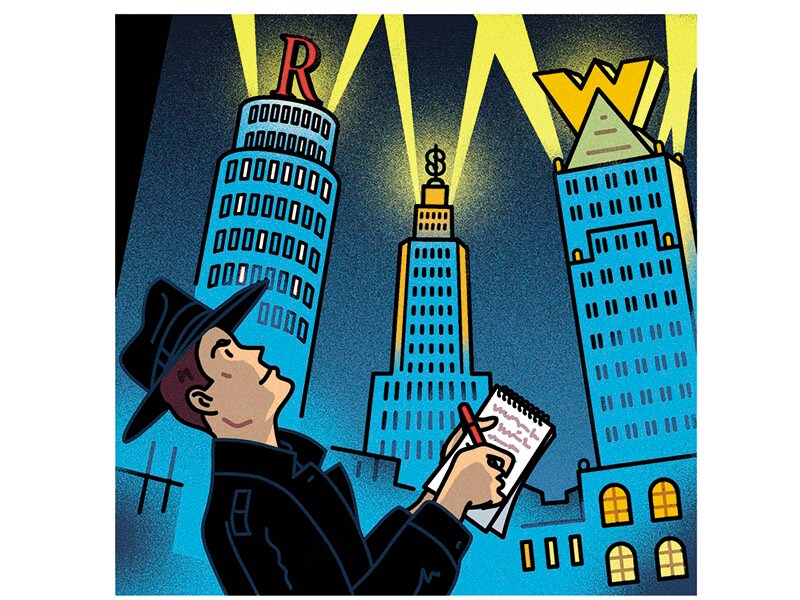
Birth of the Forbes 400
You think making the first million is hard? Try making your first millionaires list

Illustration: Christoph Hitz for Forbes
In 1981, Forbes editor Jim Michaels called associate editor Harold Seneker into his office. “It was a Friday afternoon,” Seneker recalls. “The time reserved for firing people.” What he heard instead was arguably worse. His next assignment was an idea that came from Malcolm Forbes himself: Compile a ranking of the wealthiest people in America, the first-ever Forbes 400 (a nod to Caroline Astor’s fabled ballroom, which could fit only 400 swells).
Most staff members didn’t think it was possible to do such definitive calculations. Granted, you could get public holdings from the Securities and Exchange Commission. But what about private businesses? Homes, yachts, art collections? Michaels told Seneker to do his best.
Seneker began by diving into the relevant news files and teaming with Jonathan Greenberg, a young reporter, to scour the country for leads. The pair criss-crossed the nation, talking to bankers, fundraisers and local journalists—anyone who might have insight into wealth. One of the biggest challenges: Solving the labyrinth of New York real estate. “We got this directory that showed who owned every single building in New York City,” says Greenberg. “We went down Fifth Avenue and Park Avenue and Madison Avenue and looked at every building and looked for the names that reoccurred.”
Next came the interviews with potential Forbes 400 members themselves. Most preferred not to be listed, and some simply hung up on reporters, but others were eager to talk about themselves or—more often—about everyone else. Subjects might not confirm their own holdings, but they were happy to sell out a competitor’s silent partners.
A select few even lobbied for a lower or higher spot on the list. These days you have to be worth $1.7 billion to land on The Forbes 400, but back then it was a mere $100 million. One mogul caught wind of that figure and pleaded that he was surely worth less. It was almost convincing—until he agreed to sell a portion of his massive ranch for $500 million. And, Greenberg recalls, in a failed bid for a higher ranking, Donald Trump faked phone calls from his father and a buyer interested in one of his buildings during a meeting.
After over a year of reporting, the first Forbes 400 list hit newsstands in September 1982, though it received mixed reviews from list members. “Every goddamn stockbroker in the US has called me,” lamented media mogul Malcolm Borg. “Oh, what a mess!” Victoria’s Secret boss Les Wexner complained: “I was closet rich until this thing was published. Now I’m out of the closet.”
Others didn’t mind the attention. National Enquirer owner Generoso Pope Jr was “flattered” and real estate scion William Horvitz admitted that it made him “feel pretty good deep inside”. And Donald Reynolds, another media millionaire, knew that Forbes was just getting started: “Being a vain old man, I was terrifically impressed,” he told the magazine. “I read it all the way through and am looking forward to the next one.”
(This story appears in the 30 November, -0001 issue of Forbes India. To visit our Archives, click here.)




